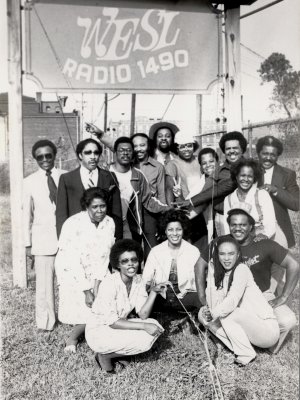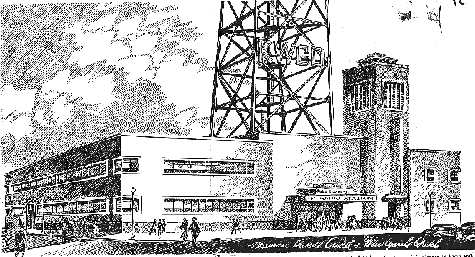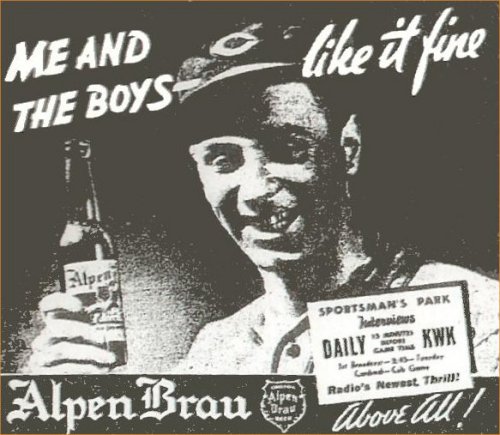Radio Articles
The Radio Station Dad Built In Our Basement
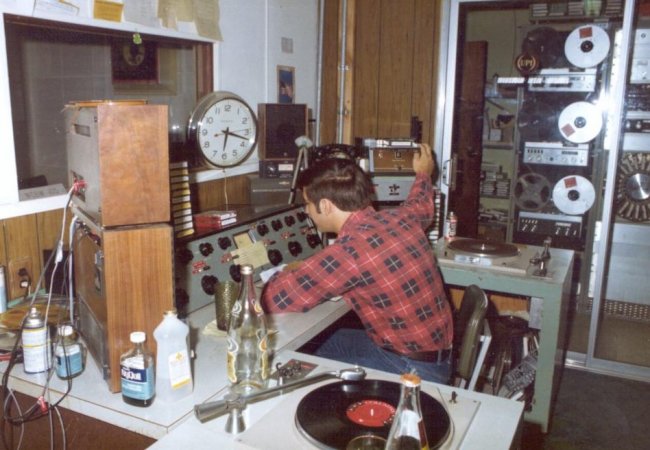
What set Joy Lepp apart as a teenager was the fact that there was a radio station in the basement of her house.
When she was 16, Joy’s father, Joseph Lepp, realized his lifelong dream by building a commercial station, WCBW-FM, in the basement of his Columbia, Illinois home. This meant Joy and her two brothers experienced a home life unlike those of her peers. For one thing, there seemed to always be music in the background. And there was a constant stream of people coming to work and going down the basement stairs. And, as a sort of added bonus, Joy got to be on the air.
“Everyone in the family voiced commercials,” says Joy, who is now Joy Kocher. “I did a daily spoof of the local weather girls and put on a sexy, disguised voice. All the guys at school wanted to know who our weather girl was.”
Joy wasn’t the only Monroe County teenager involved with WCBW. Steve Schmidt from Sts. Peter & Paul High School in Waterloo had a regular air shift using the air name “Steve Williams.” “My parents had been friends with the Lepps for years. When my dad told me that Joe had applied for the radio station license, I said I’d love to work there. Like any other 17-year-old guy growing up in the Johnny Rabbitt era, I thought being a deejay would be really cool.”
Steve was on the air the first day of operation, February 15, 1964. He was told to play some music and read the news. “Dad had about fifteen record albums to start,” says Joy Kocher. Schmidt says the music consisted mainly of “easy listening” material from artists like Percy Faith and Mantovani. “In the initial years all the deejays decided on which music we would play. I was the closest thing to a program director or music director that WCBW had. I worked the record companies and distributors for new product and ordered the deejay promo copies of albums that we needed,” Schmidt said.
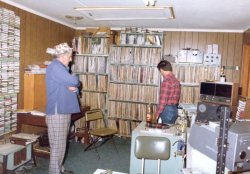
Dorothy Lepp, Joe’s wife, was “the rock who kept things going,” says Joy Kocher. “She loved the excitement and disruption of having WCBW in the house.”
Dorothy did all the office work, even writing commercial copy and occasionally reading news on the air. Joe kept his day job at the Missouri Pacific Railroad, and he also found time to sell ads for the station and sometimes pulled an air shift. “Dad loved radio,” Kocher says. “Grandma said he used to pretend he was working at a radio station when he was little.” The realization of that dream came when he was 52.
WCBW-FM was typical of most small town radio stations in the mid-60s, according to Steve Schmidt. Even though it was on the fringe of the St. Louis market, the station’s programming was aimed at the Monroe County audience. “I hosted the German Music Parade for awhile, and Polka Time was on every day at 5:30. There were also plenty of remote broadcasts from local churches.” Joy and Steve were teamed to host the station’s teen show for about four years. Steve also remembers anchoring a local news show which consisted of reading tidbits out of the Monroe County newspapers. “I think the papers sponsored the show. I was supposed to read the first couple lines of each story and then tell the listeners to buy the papers for more information.”
Joy was one of the staffers who read the obituaries provided by the local funeral homes each day. “It was during the Vietnam War. I had to read the obituary of a friend of mine who was killed in action. It was one of the hardest things I ever did.”
Other announcers in the early days of WCBW-FM included Eric Stiegerman and Tony Mayer, who hosted a German-language program, and regulars Jim Gray, Bill Ray and Dick Ross. As one might expect, the station’s equipment was bare bones in the beginning. “There was no tape cartridge machine for about the first six months on the air,” according to Schmidt. “You either read the commercial live or played it back on the Roberts reel-to-reel machine. (Commercial copy, often hand-written, was kept in a three-ring binder.) We broadcast in monaural sound at 104.9, and the tower was out on Cemetery Hill.” Joy Kocher remembers staffers having to go to Cemetery Hill several times a day to take transmitter readings.
Eventually the station was moved out of the basement and into the Lepp’s garage. Steve Schmidt says the move was made in the early ‘70s and became necessary because the Lepp’s basement, like many others, was susceptible to flooding.
(Reprinted with permission of the St. Louis Journalism Review. Originally published 11/2003)
